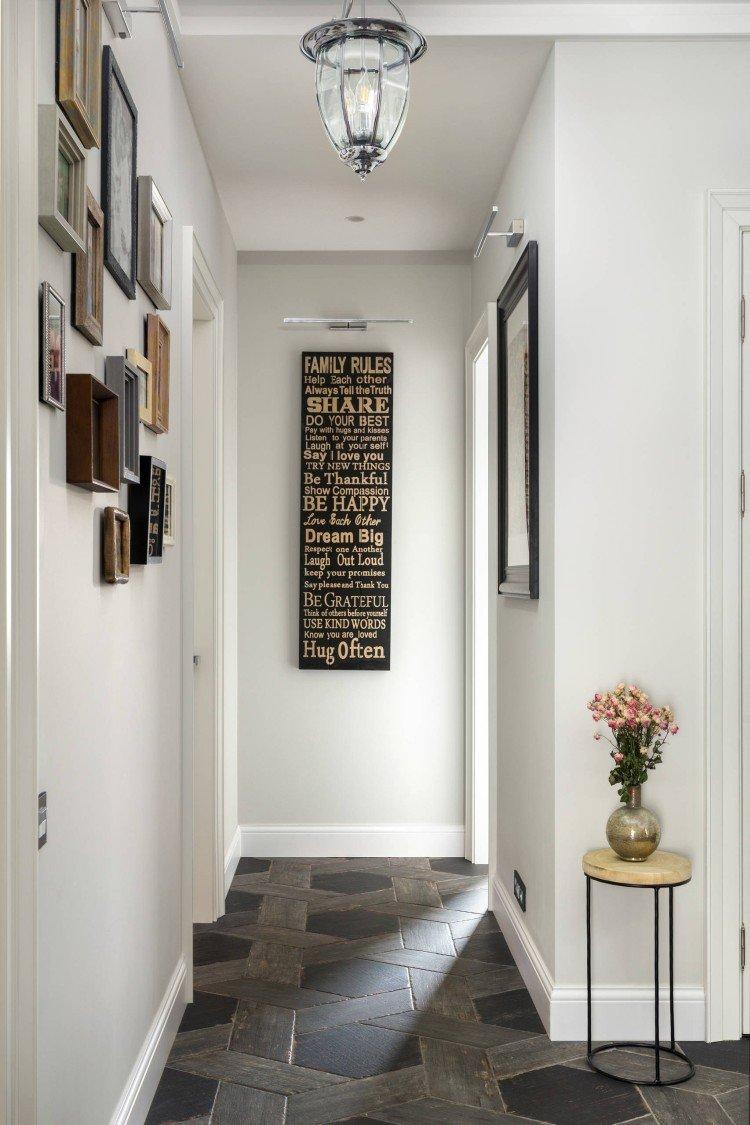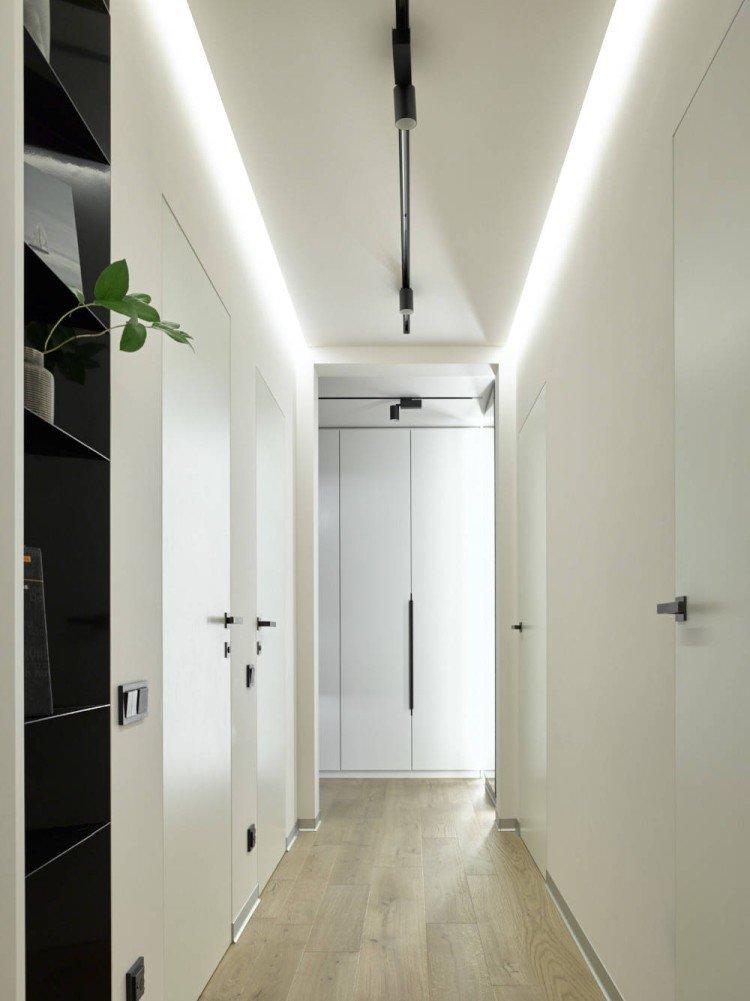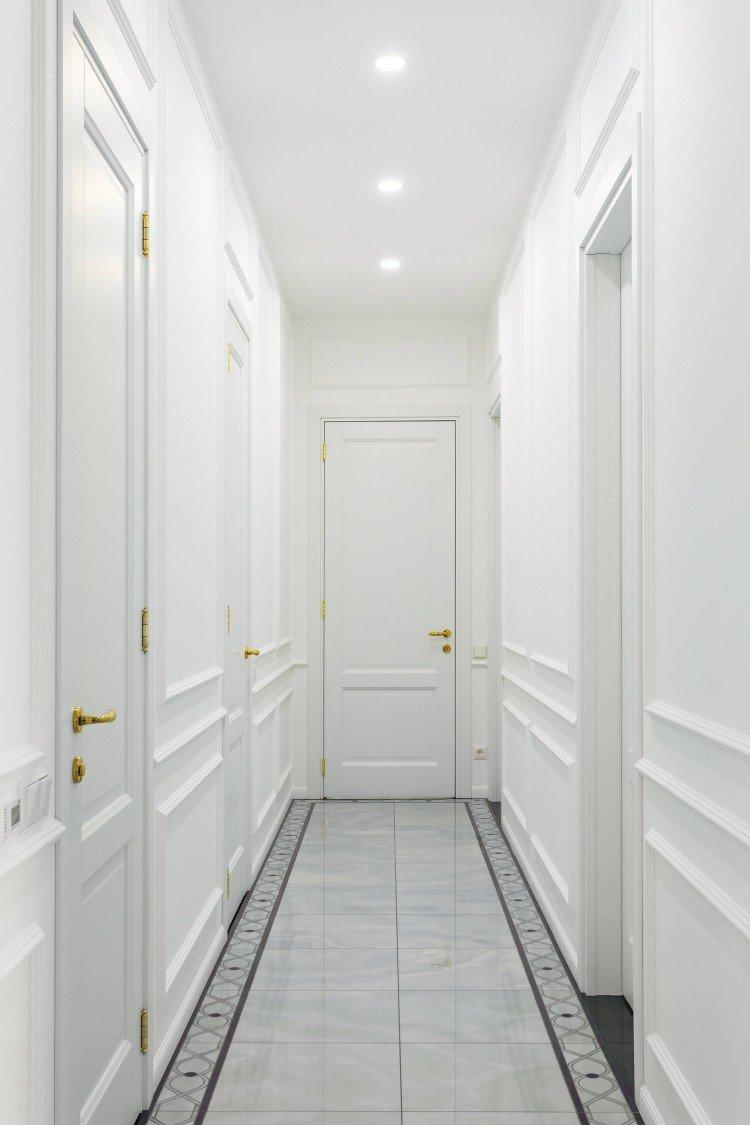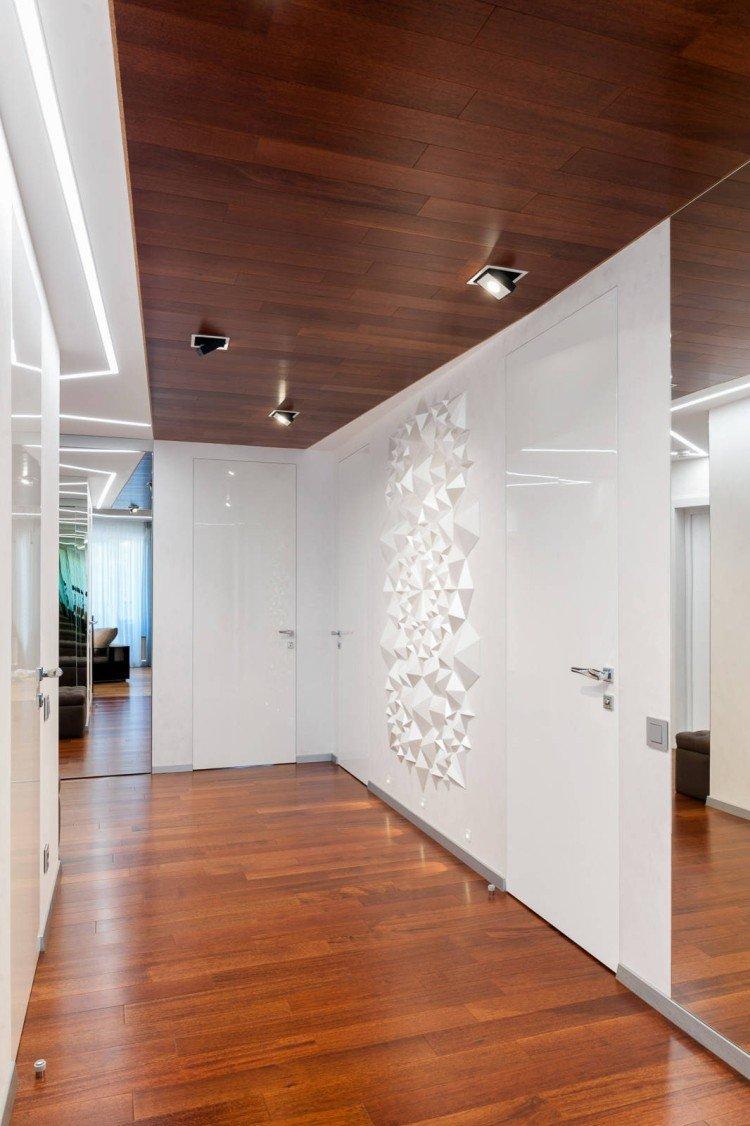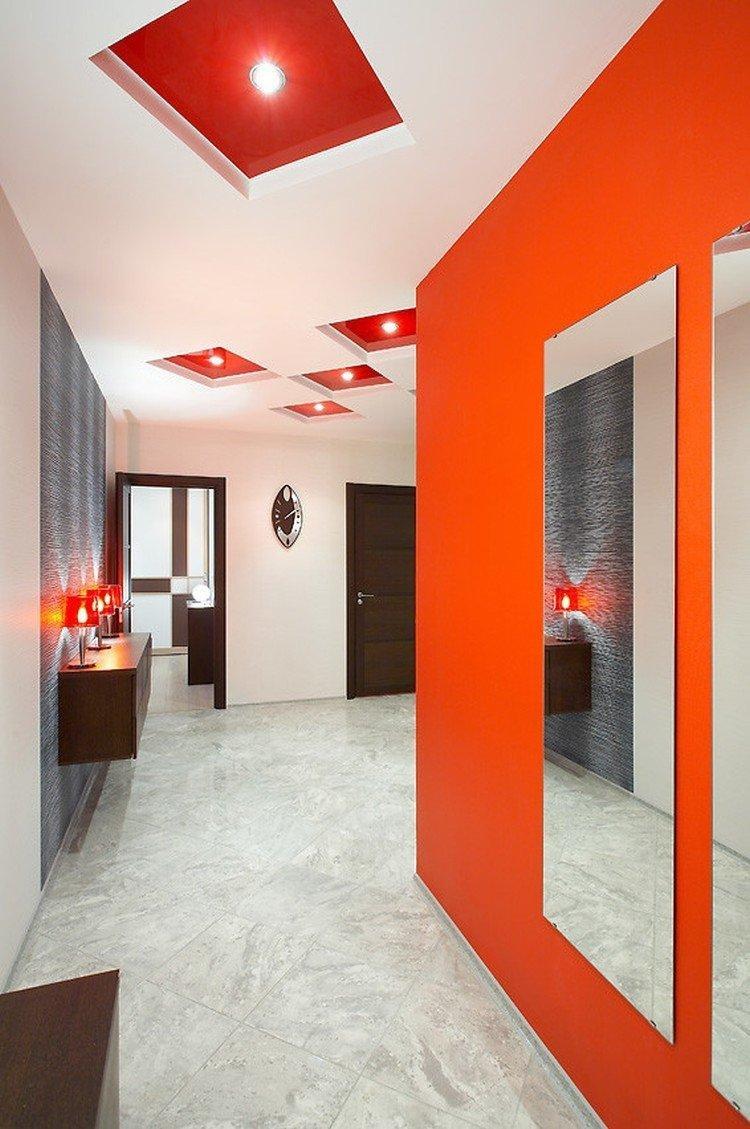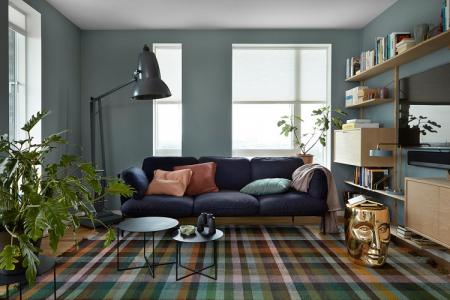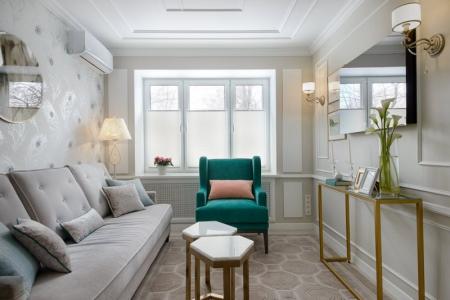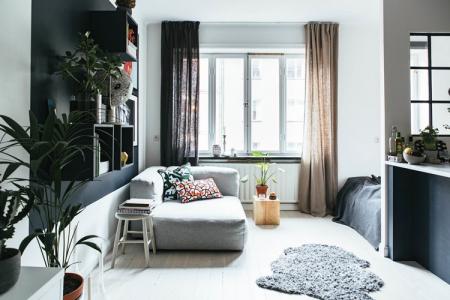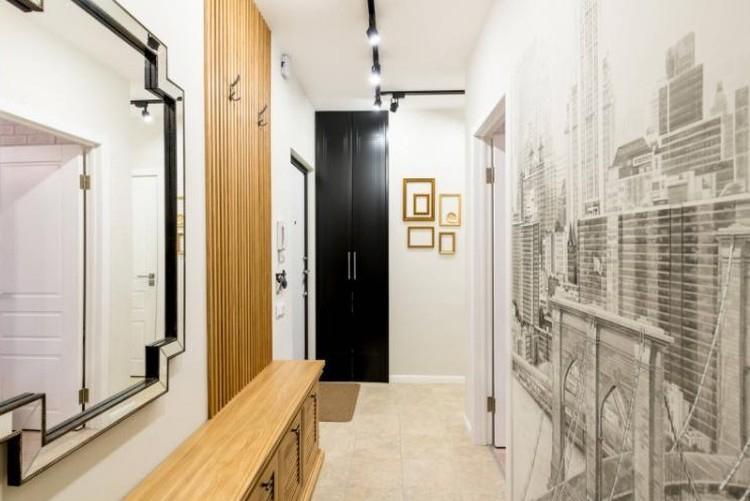
Corridor finishing is a real challenge for beginners and experienced designers. Go into any standard apartment - and it will be the strangest, narrowest, darkest and most inconvenient room in terms of decoration. At the same time, it is the corridor that guests see first, and often it also serves as a hallway!
Choosing an interior style
It is difficult to talk about interior styles when it comes to a corridor, but we are not afraid of challenges and non-trivial tasks. After all, you want the whole apartment to be beautiful and comfortable - from the front door to the far corner of the bathroom. So let's find out what principles can be applied to save the day!
Corridor in modern style
The modern style is good even for the smallest corridors, because it allows you to combine any textures. Use mirrors, gloss and chrome to visually expand the walls and increase the space. By the way, there will be multifunctional storage systems, transformers and modular blocks.
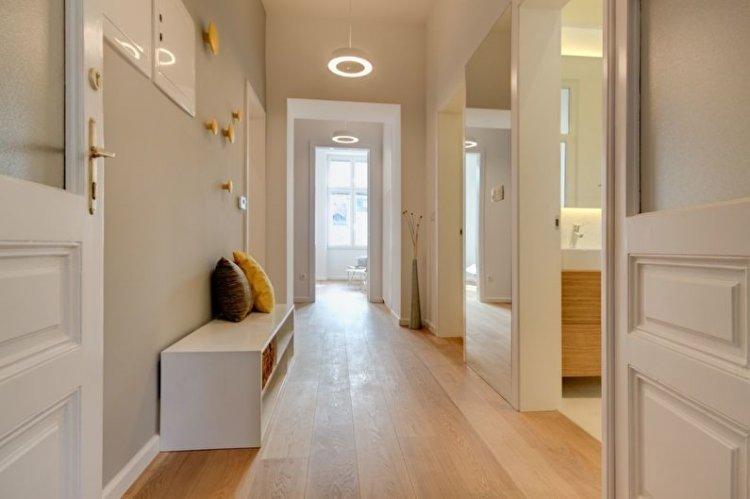
Scandinavian style corridor
Scandinavian interiors are completely built on white, and this is very useful in a narrow, cramped corridor. A smooth, uniform background of all major surfaces will blur the visible boundaries and create a sense of space. And add colors with black and colored details - yellow, blue, green.
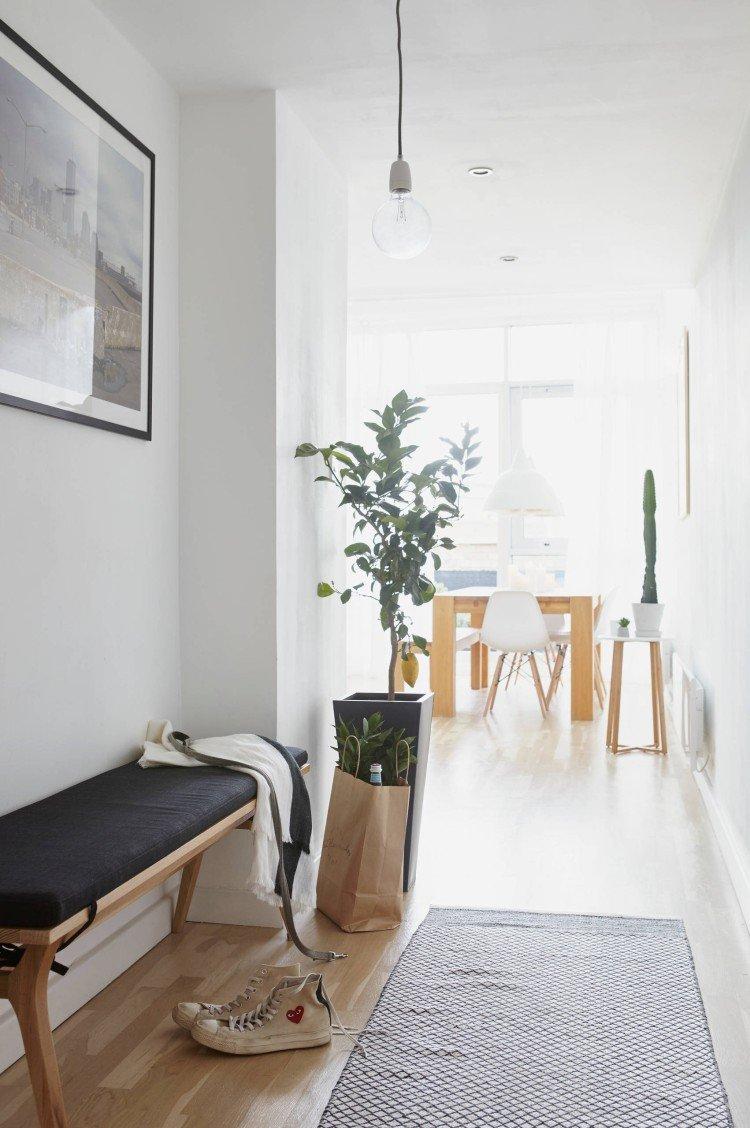
Loft-style corridor
The good thing about the loft in the hallway is that you can minimize the finishing. Even bare walls and roughly installed lamps in such an interior are not a mistake, but a feature. The main problem is to provide enough light if you leave gray concrete or red brick walls.
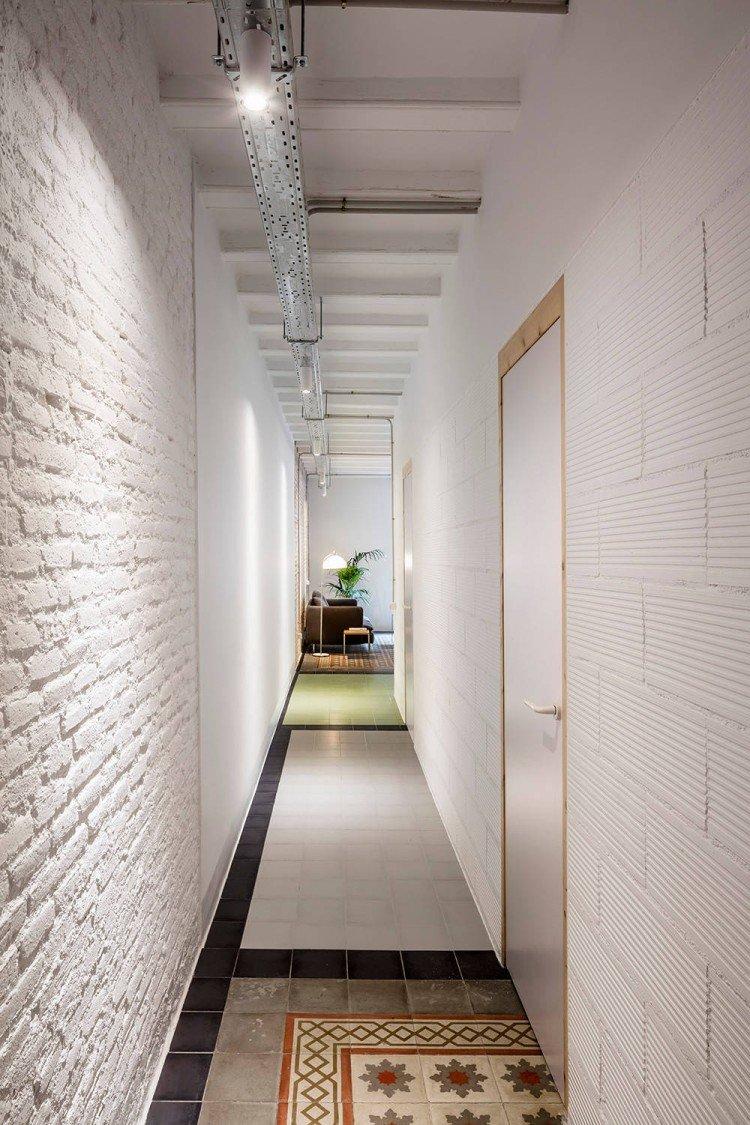
Provence style corridor
If your whole apartment is gentle and romantic, then it is better to make the corridor in the mood. Light lace Provence with its bleached and pastel colors is well suited for this. For decoration, use mosaics, decoupage, furniture with small carved details, baskets for improvised little things, padded stools with fabric upholstery and openwork lamps.
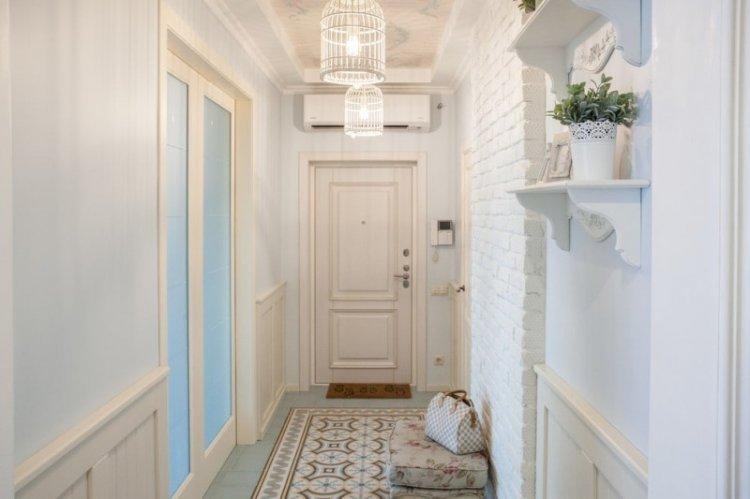
Classic style corridor
The classic style requires scope and pomp, so it will be possible to fully recreate it only in a spacious wide corridor. But individual elements can always be used: wallpaper with monograms, stone floor, forged parts, symmetrical arrangement, stucco decoration and lamps with pendants. Just choose light white and beige shades so that the interior is not too bulky.
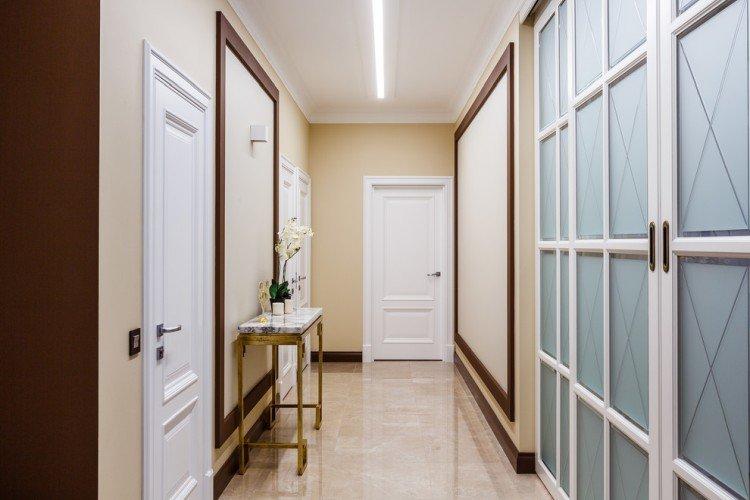
Color spectrum
Traditionally, light colors are used to decorate the corridor, because they compensate for the absence of windows and the lack of light. But this does not mean that all interiors will be bland and monotonous. You just need to approach the issue with imagination!
White corridor in the apartment
White is the simplest and most obvious choice, but it doesn't make it worse. The main thing is to dilute it with other colors so as not to get a sterile hospital one instead of a home corridor. And carefully choose all finishing materials - they must be as non-staining and easy to clean as possible.
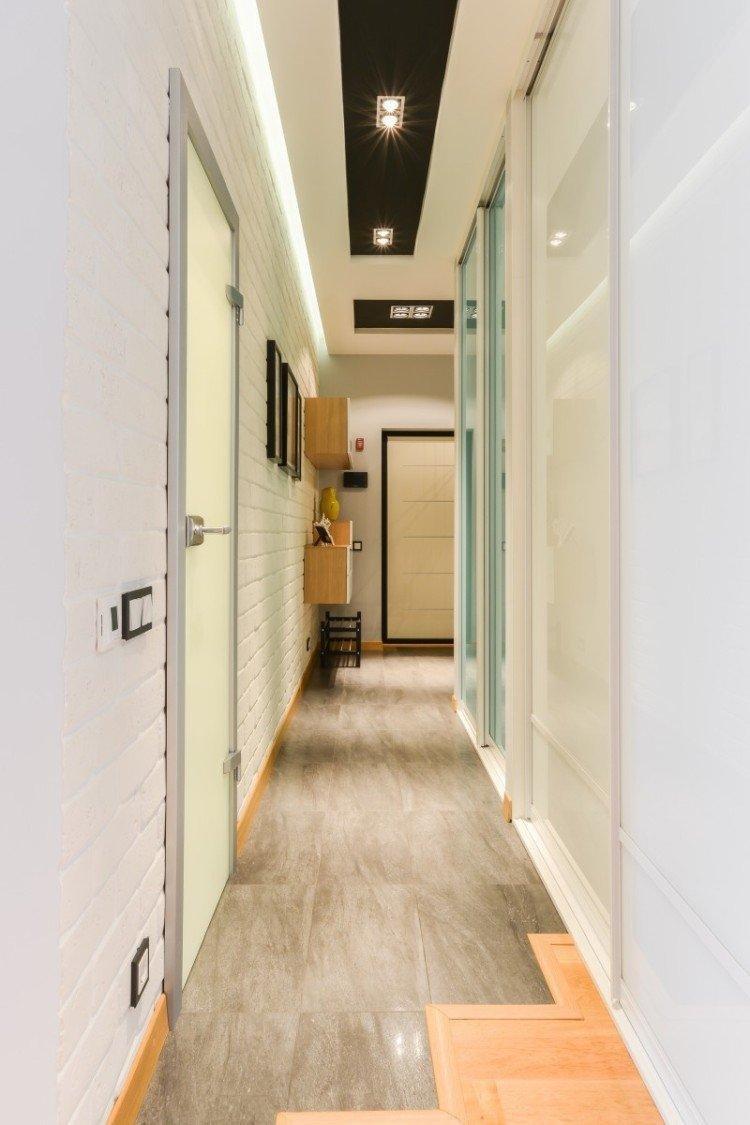
Gray corridor in the apartment
If the whole apartment is rather strict and laconic, the gray corridor will be a harmonious beginning. The variety of shades allows you to make the interior completely monochrome, but still spectacular. The play of halftones will visually adjust the space: for example, paint short walls with paint darker than long ones.
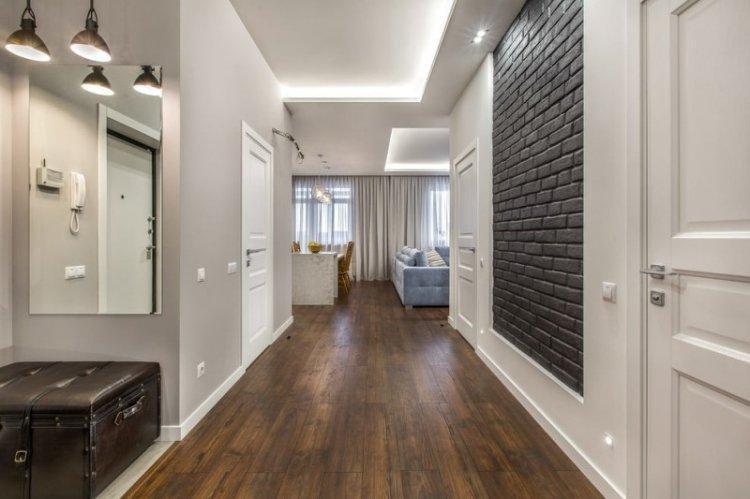
Beige corridor in the apartment
Beige interiors are always more classic, warm and cozy than all-white interiors. And they are also less easily soiled, which is important in the corridor that adjoins the hallway or performs its function. Choose from several shades: from pale milky to rich sandy.
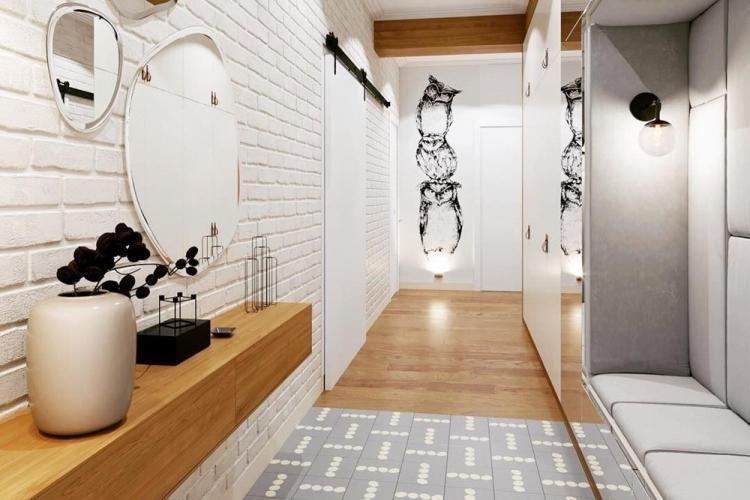
Black corridor in the apartment
If you are lucky enough to have a fairly spacious corridor, feel free to use black color - it is very fresh and stylish.You don't need to paint all surfaces into it, but a black wall or matte black furniture against a neutral background looks especially impressive. This is a godsend for modern minimalist interiors, contemporary and hi-tech.
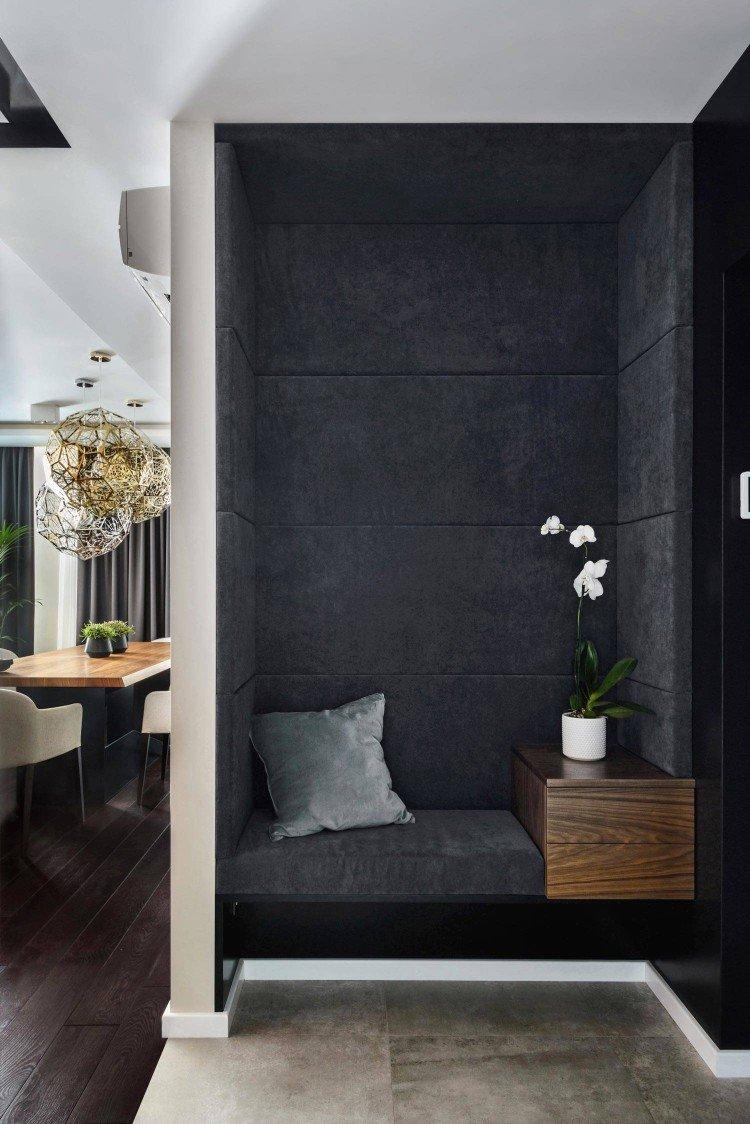
Brown corridor in the apartment
Brown color in decoration is, first of all, wood in all its manifestations. If there is a lot of furniture or a large wardrobe in the corridor, it is difficult to do without brown. It will also complement untreated red brick, porcelain stoneware on the floor, and any other materials.
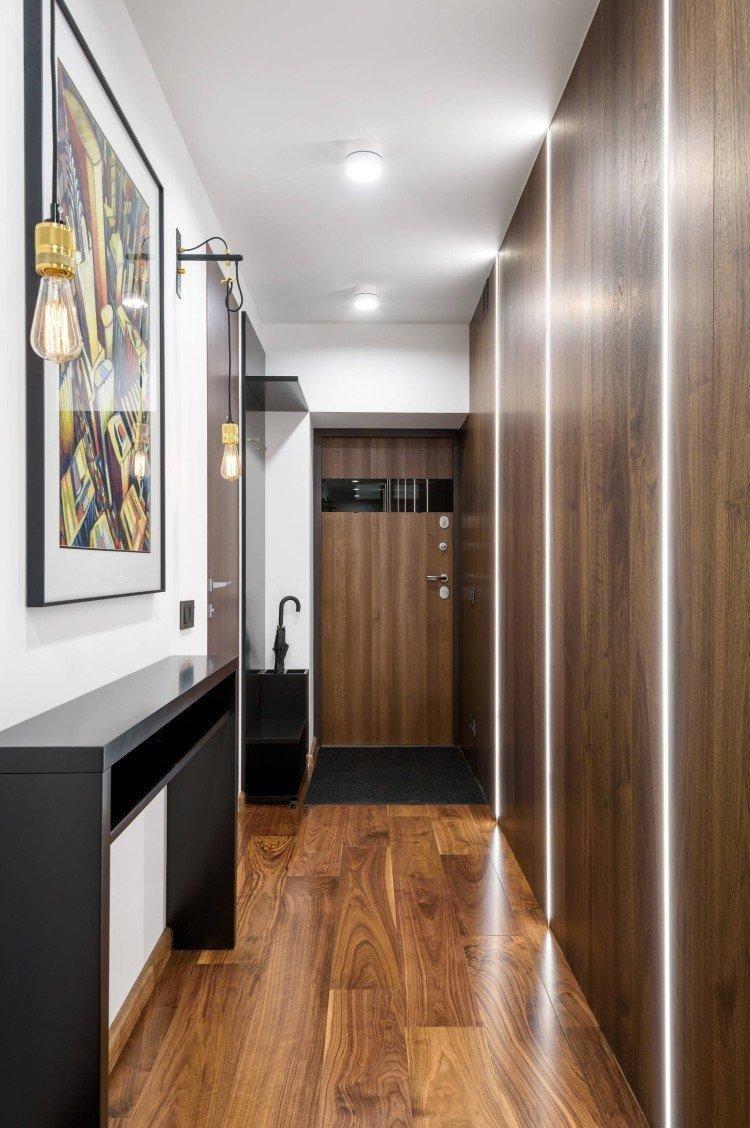
Materials and design
There are two main criteria when choosing materials for finishing a corridor - strength and unpretentiousness. You need the most durable surfaces that are not afraid of scratches, moisture and dust. And it is also desirable that these were compact materials - for example, wallpaper or paint instead of embossed cladding panels.
Floor finishing
The corridor floor has to withstand everything: heavy winter boots, sharp summer heels, and the evening entertainment of your beloved pet. For this, there is a special laminate of increased wear resistance classes. But best of all - high-strength tiles or porcelain stoneware, which are not afraid of snow or dirt, or even if you completely flood them with water.
Linoleum is fine if you plan on replacing it in a few years - it's still too soft. Natural stone is heavy and far more finicky than modern tiles. If the corridor smoothly passes into another room, you can combine several coatings and veneer only the entrance area with porcelain stoneware.
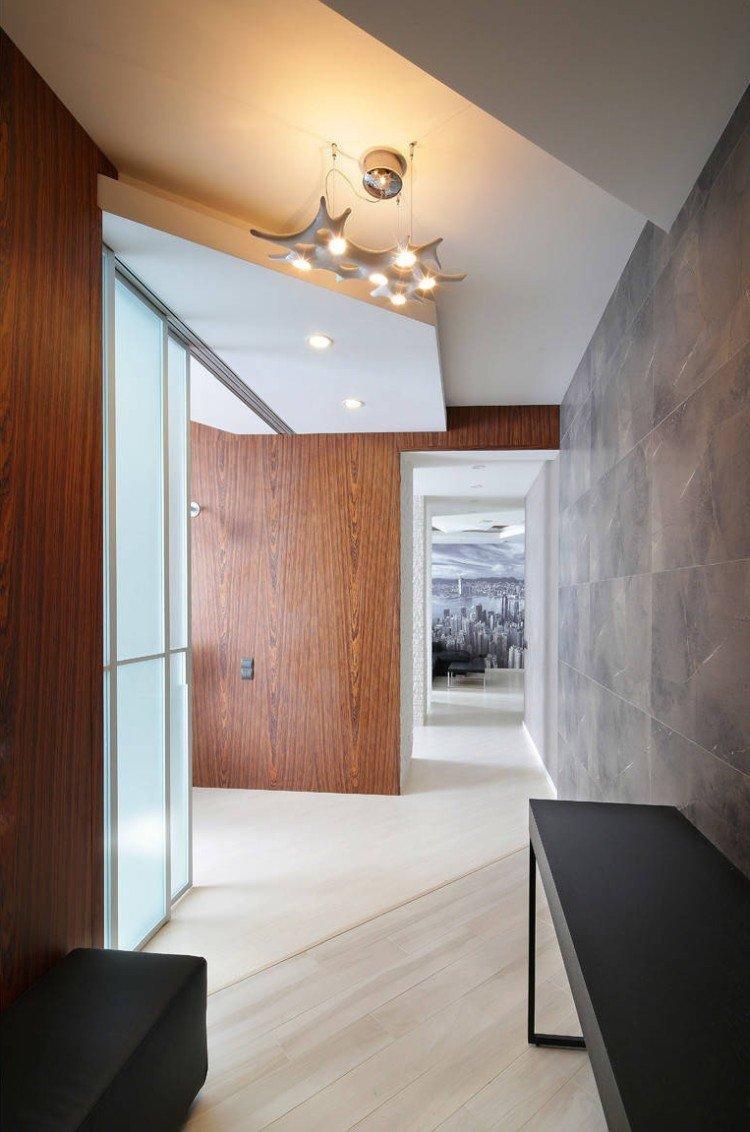
Wall decoration
When decorating walls, immediately resolutely exclude any paper and fabric coverings - they will get dirty and rubbed. The same applies to surfaces that are too embossed, which are difficult to wash - like textured plaster. Different panels or tiles are suitable for cladding, but the easiest is ordinary waterproof paint. It has one more indisputable plus - at any time you can simply paint over everything on top with a new layer.
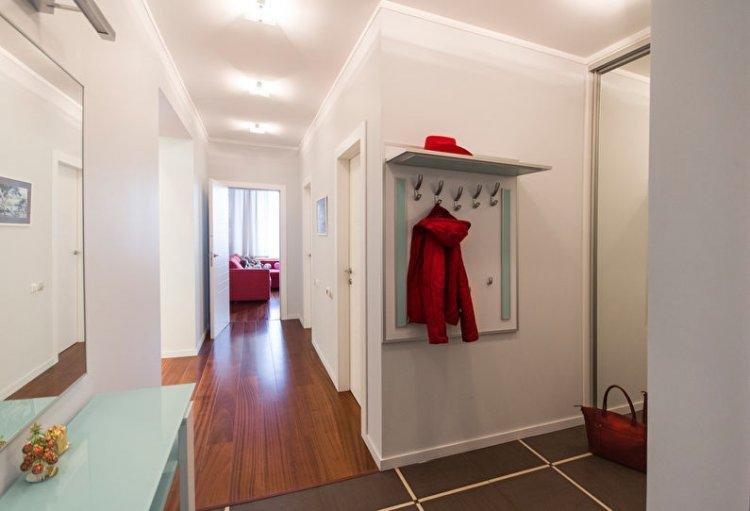
Ceiling design
The simplest solution is to paint the ceiling in the color of the walls and thereby blur clear boundaries. But not everyone is lucky with perfectly flat ceilings, and leveling is a complex and costly process. In this case, pay attention to plasterboard structures - including multi-level ones.
A practical modern solution is stretch ceilings, especially since now there are canvases for any interior. Matte or satin - for classics and provence, and mirror gloss - for modern styles. The glossy film has another plus - it immediately visually enlarges the room almost twice.
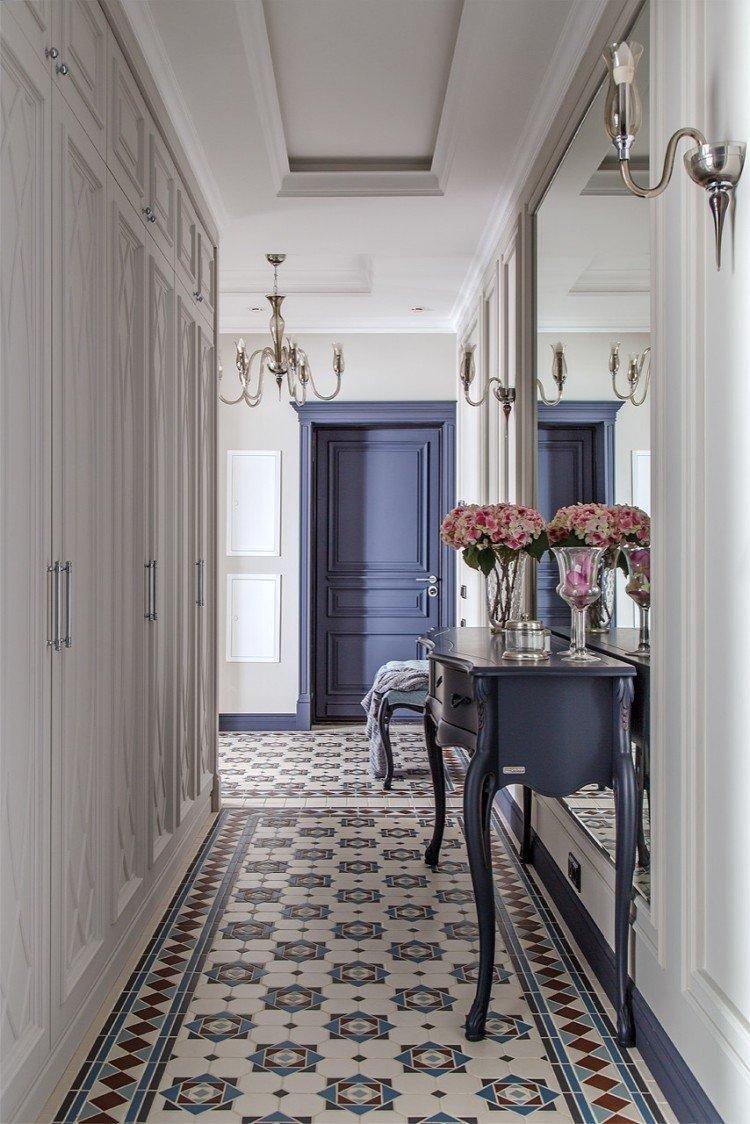
How to choose furniture?
The difficulty in choosing furniture for the corridor lies in the fact that this room is both walk-through and multifunctional. Therefore, compact modular designs and ready-made complete kits work best. For example, a hanger with a cabinet, a mirror, a pouf and drawers.
If there is a sufficiently deep niche or an old pantry, turn it into a dressing room, and in the corridor leave only poufs, a mirror, a couple of hooks and a basket for small things. Of modern solutions, wardrobes with individually designed filling are unconditionally in the lead. Particularly good are the models from floor to ceiling, which visually almost merge with the wall and do not complicate the space.
A corner radial wardrobe will fit into the spacious corridor. Its peculiarity is in curved doors, thanks to which spaciousness is preserved, but no one will stumble over corners. And if there is a small niche or a wide enough turn, you can install the built-in model.
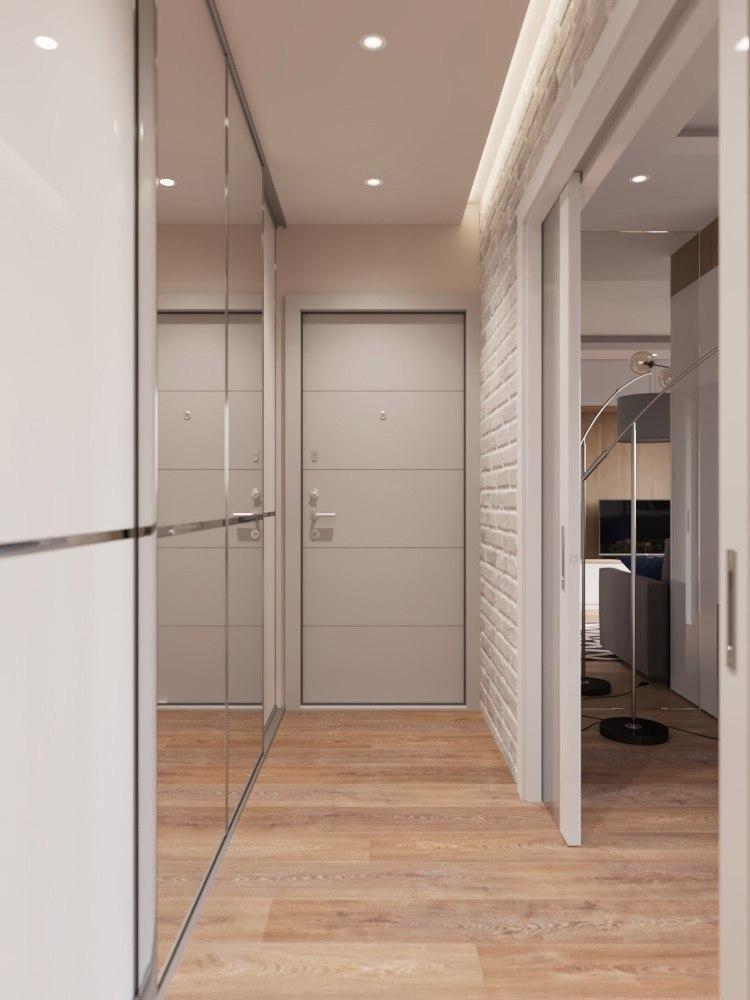
Lighting and illumination
Corridor lighting is a very crucial stage, because it is precisely because of the lack of light that narrow long rooms become gloomy and uncomfortable. Multi-level zonal systems work best - with ceiling, wall and decorative fixtures.
Chandelier and lamps
The central chandelier is a frankly unfortunate option for a rectangular corridor. If you want hanging lampshades, make a series of at least two or three along the entire length of the room. For small corridors, choose recessed spotlights - they provide uniform light, do not take up space and help expand the space.
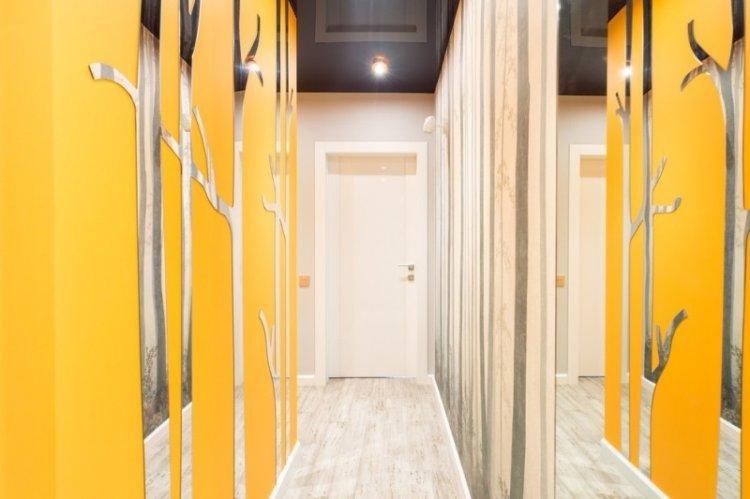
Decorative lighting
Don't forget to zone mirrors, shelves, and other strategic areas. Wall sconces in a row with a stream of light directed upwards will help to visually increase the height of the walls. In modern interiors, LED strips are good, which are used in the design of ceilings, niches, wardrobes, shelves and other elements.
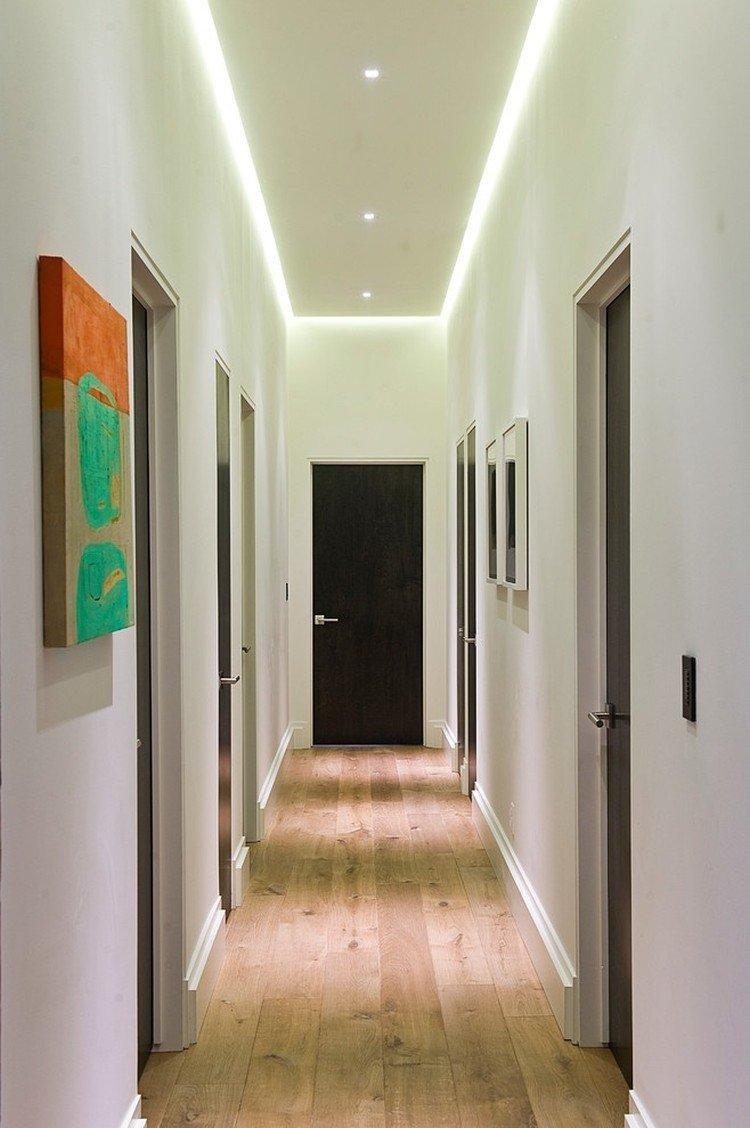
Corridor design in the apartment - photo
Despite the complexity of the task, there are much more options for decorating the corridor than it seems at first glance. We invite you to see this clearly with our selection of design projects!
Modern corridor in apartment 2020
In 2020, two interesting trends are being tracked in modern interiors that will come in handy in the corridor. The first is soft contrasts: for example, beige and gray instead of white and black. The second is blue in all its variety, with which the room immediately seems cooler, more spacious and fresher.
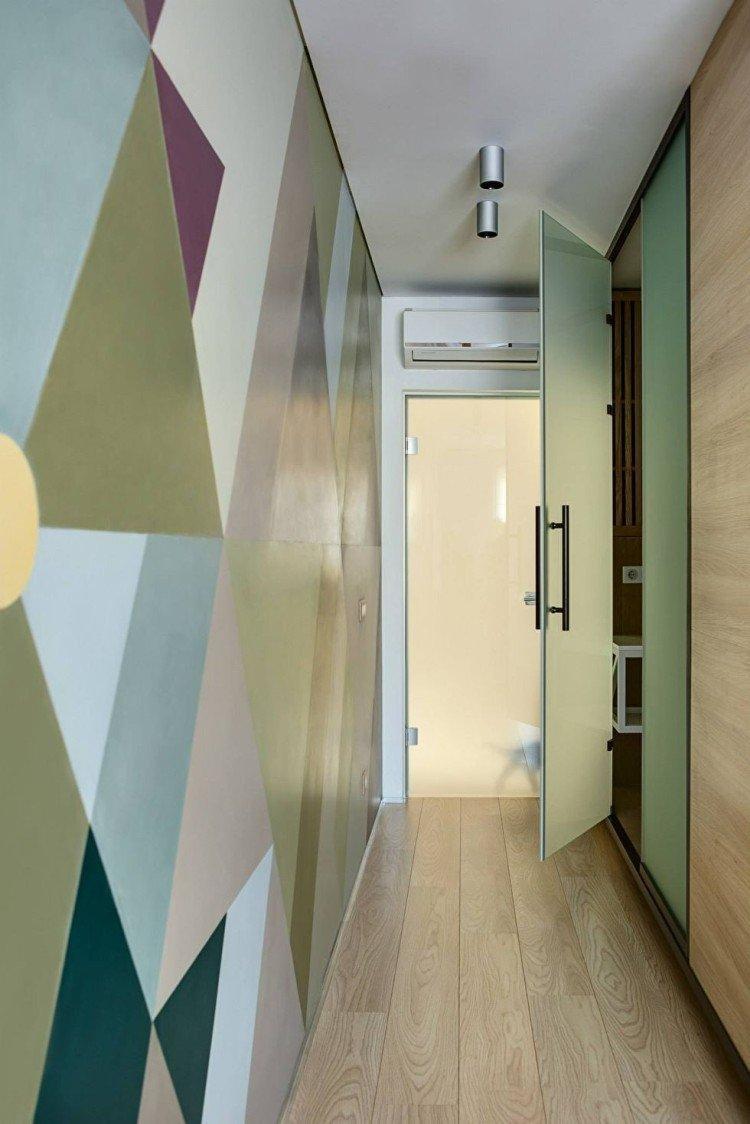
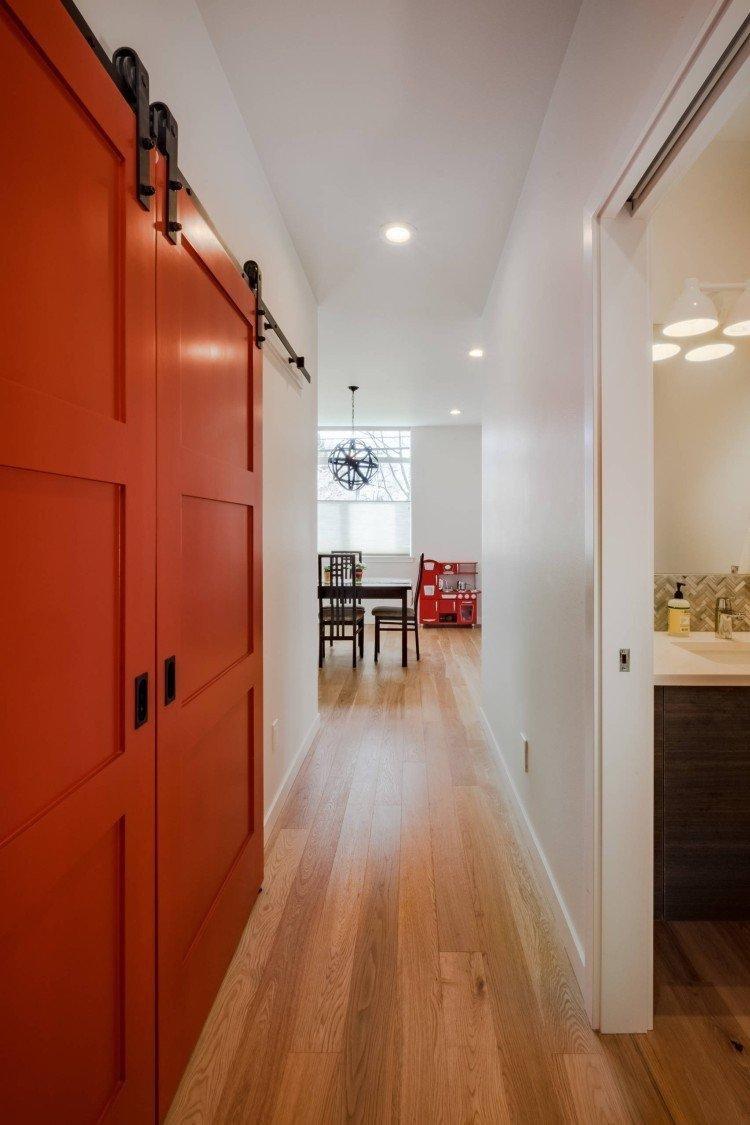
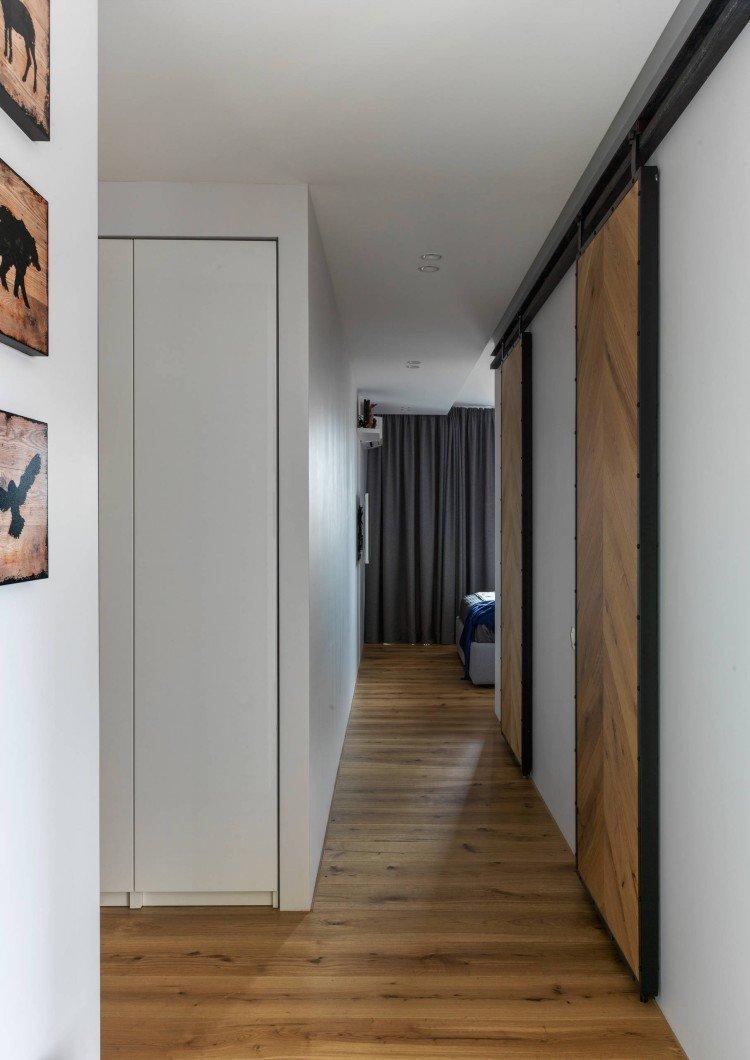

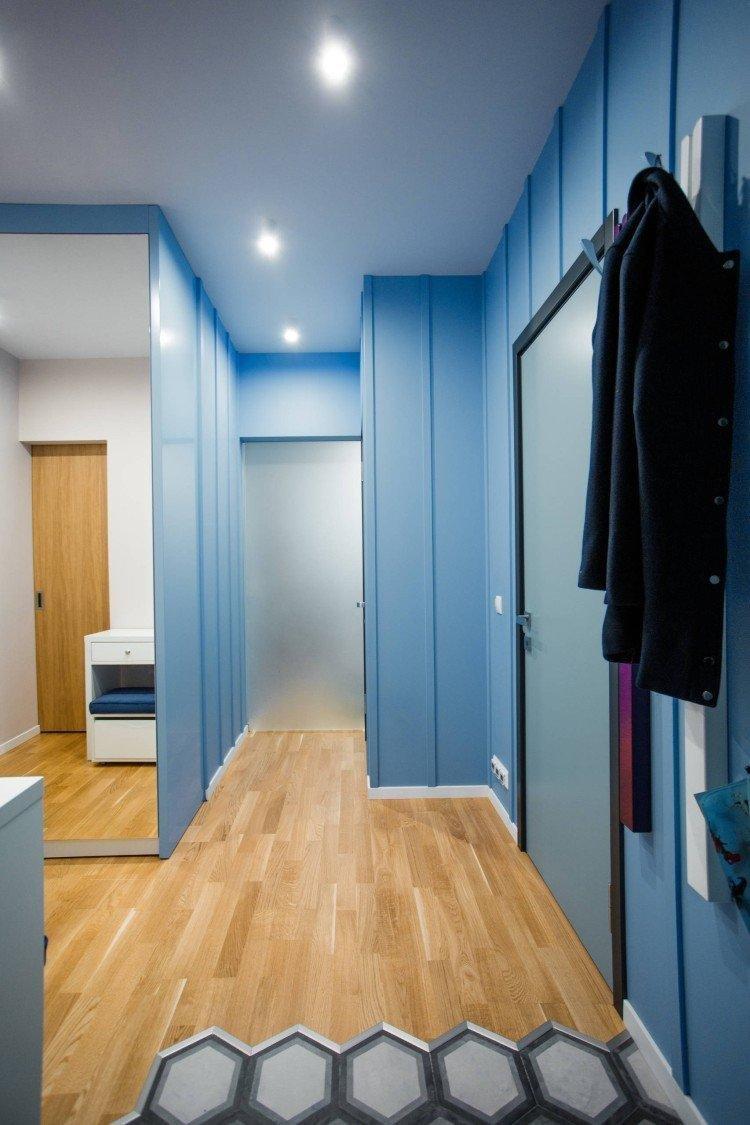
Design of a small corridor in the apartment
In a small corridor, the first step is to minimize furniture and any items in general. Carefully analyze what you cannot refuse, and what can be thrown out or rearranged in another room. In the decoration, use design tricks: for example, vertical lines visually raise the ceilings, and horizontal lines move the walls apart.
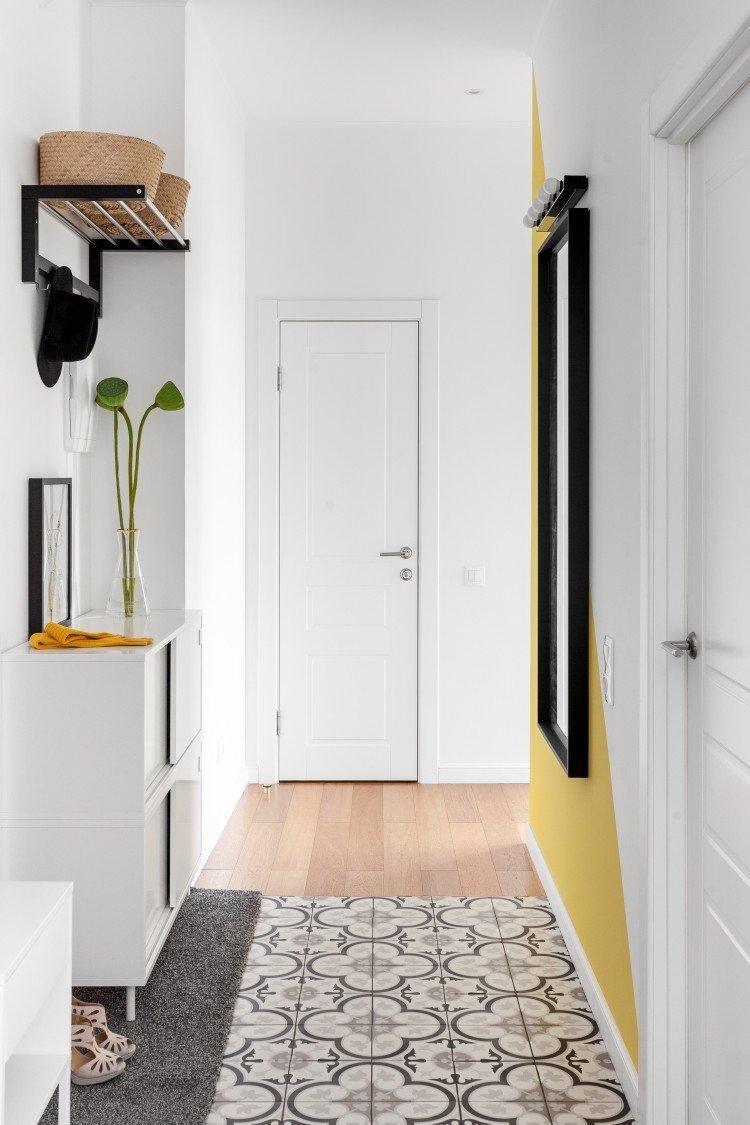
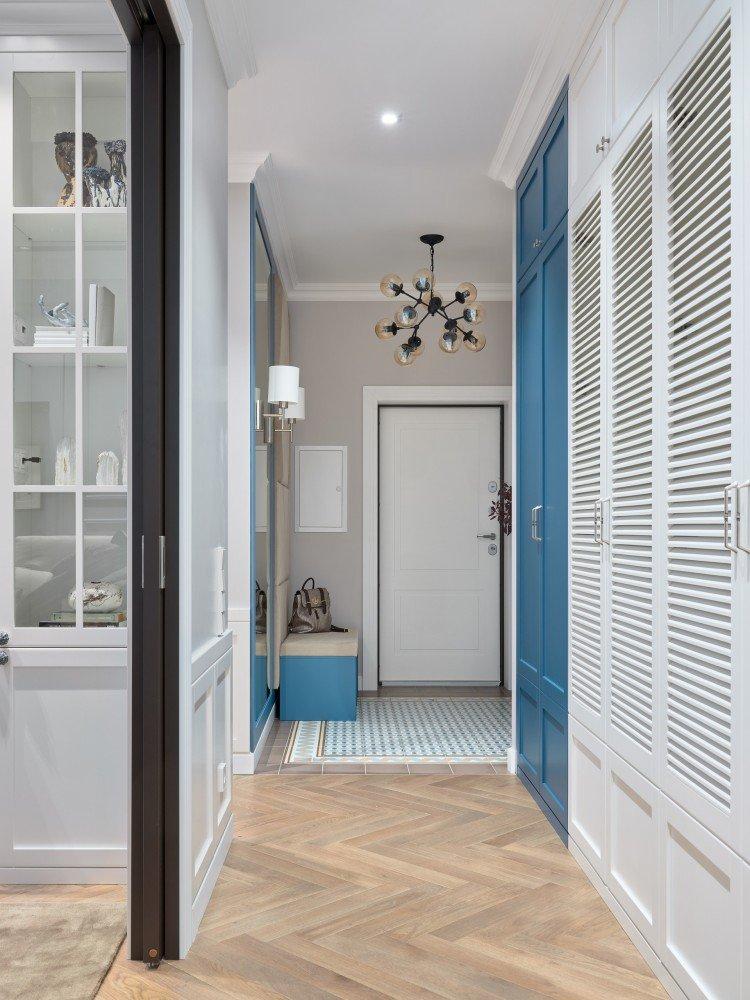
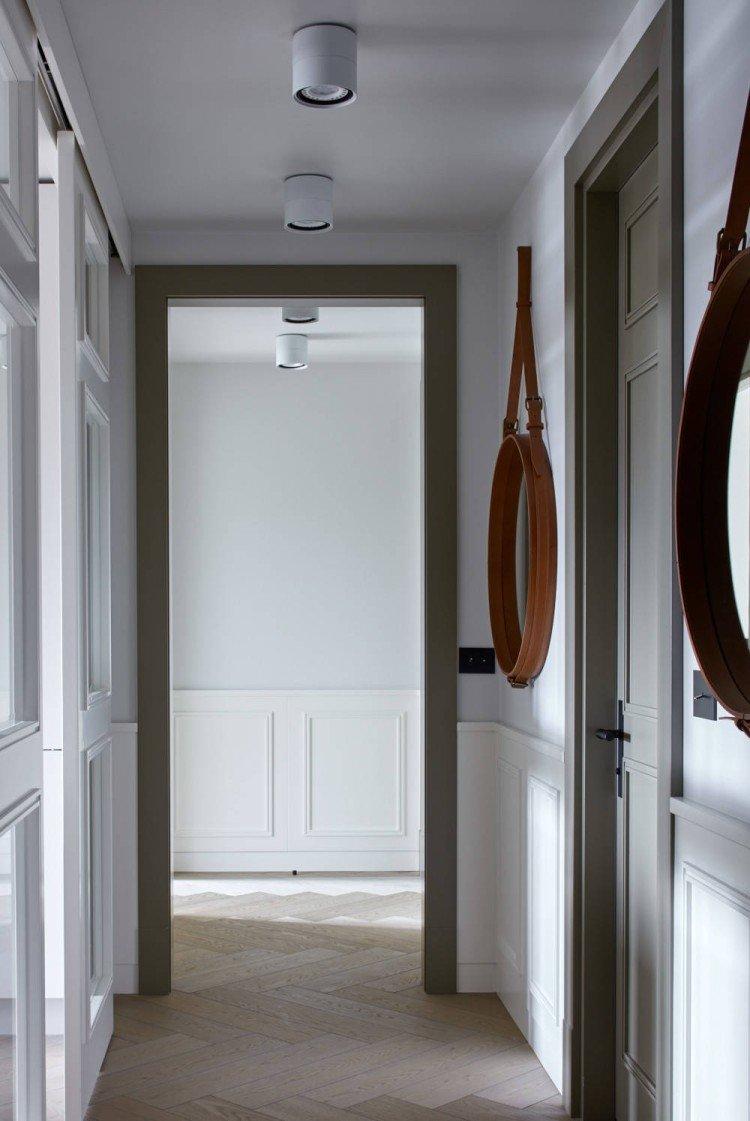
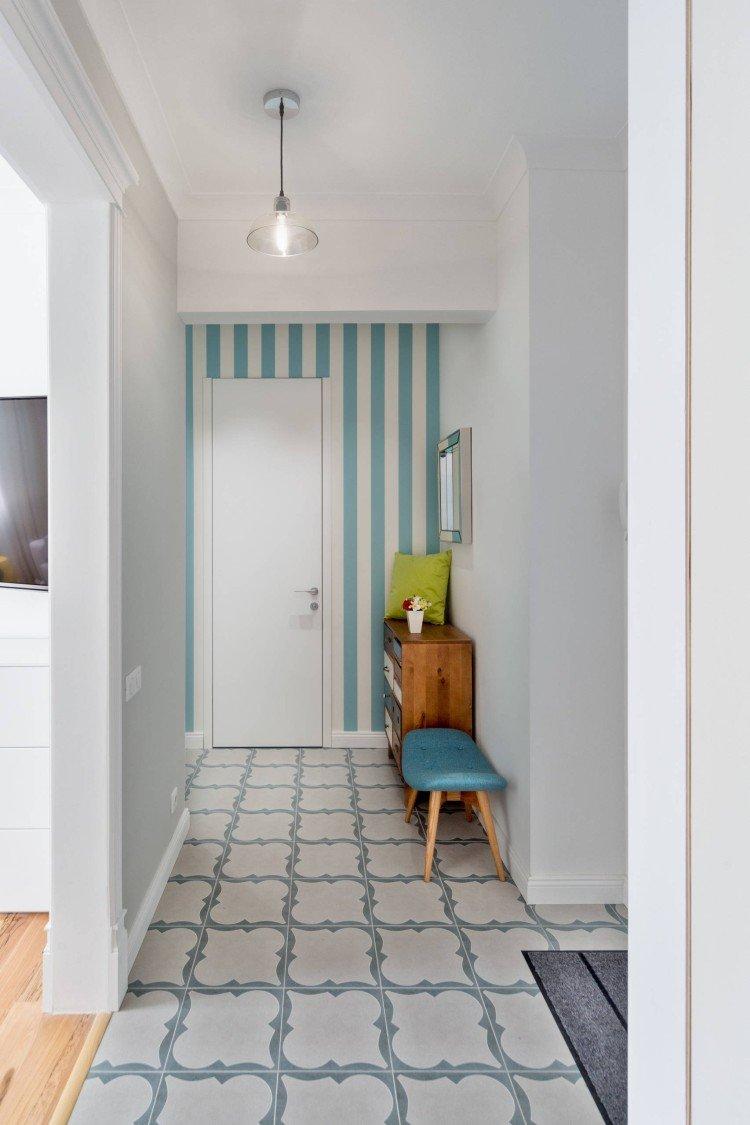
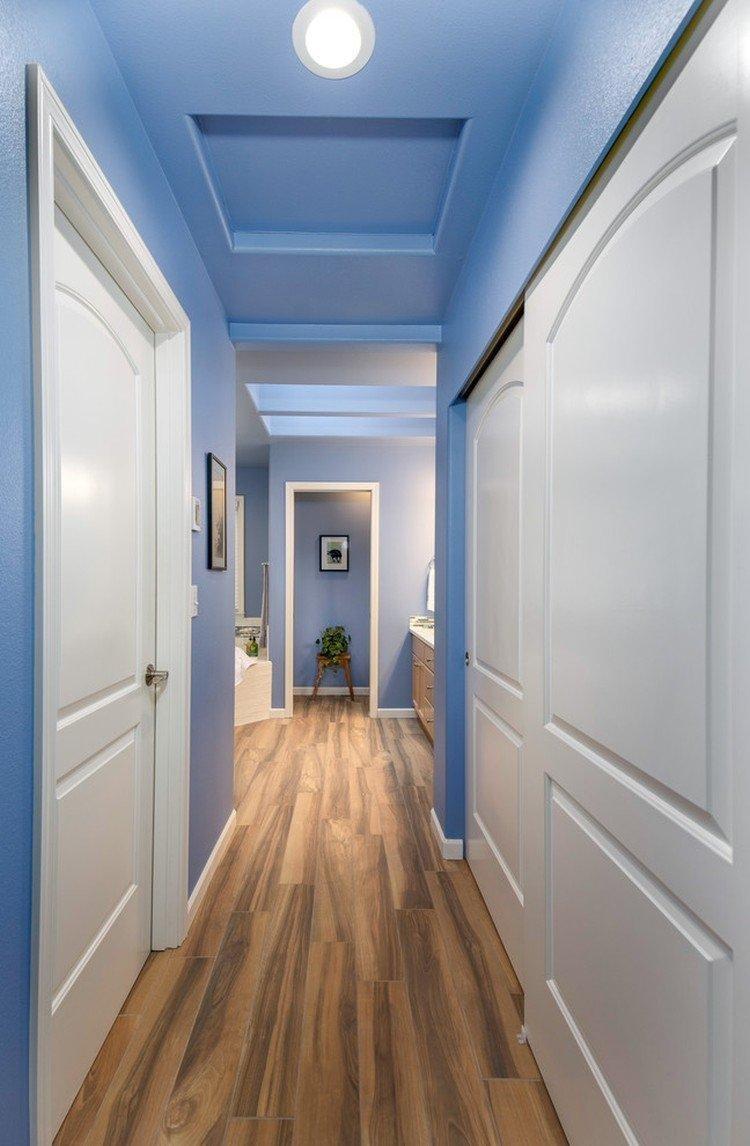
Wallpaper for the corridor in the apartment
Wallpaper in the hallway isn't the most practical covering, but if it's spacious enough, you can handle it. Just be sure to choose durable and wear-resistant collections, best of all - washable for painting. This is vinyl and non-woven, or a new trend of recent seasons - fiberglass.
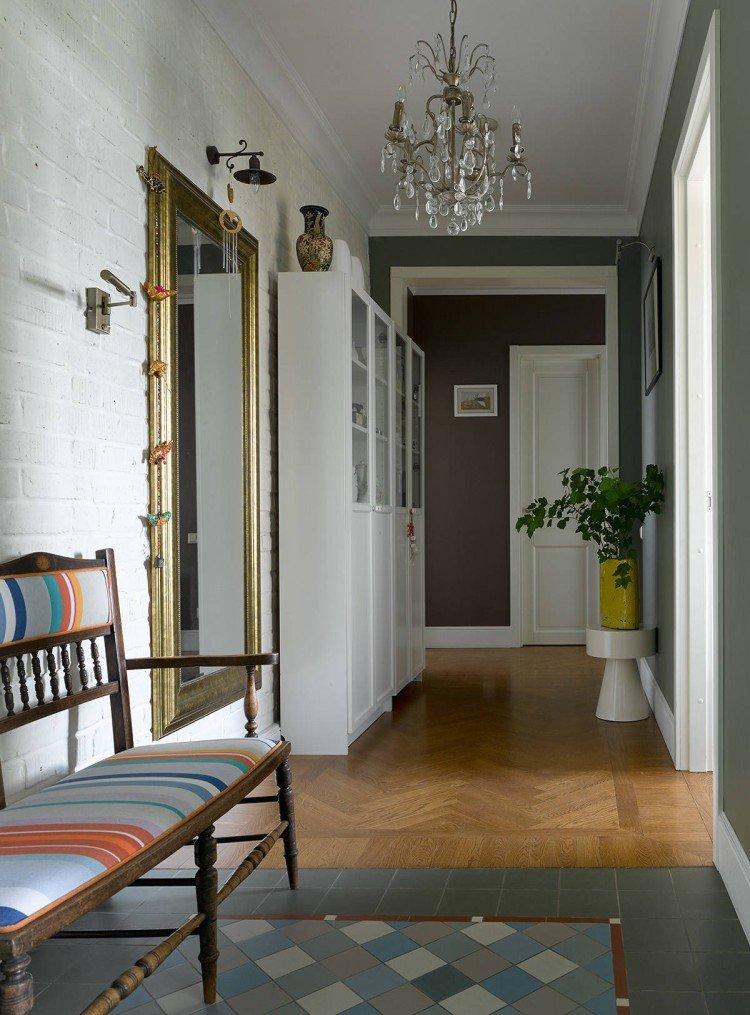
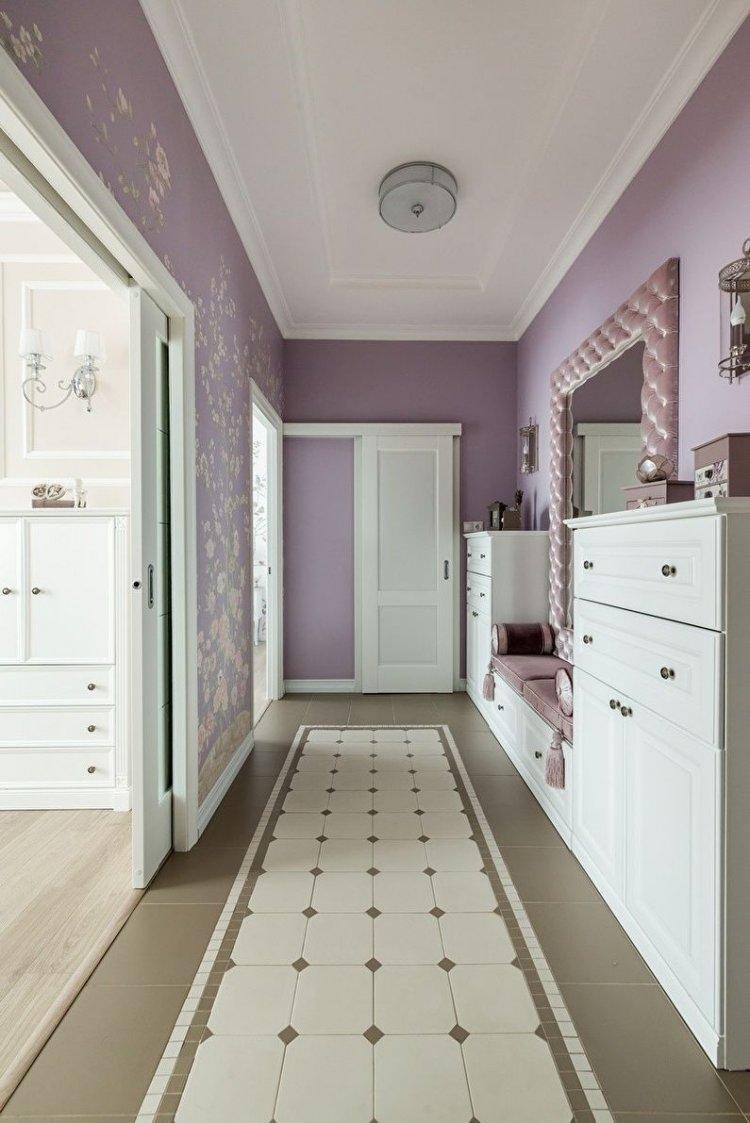
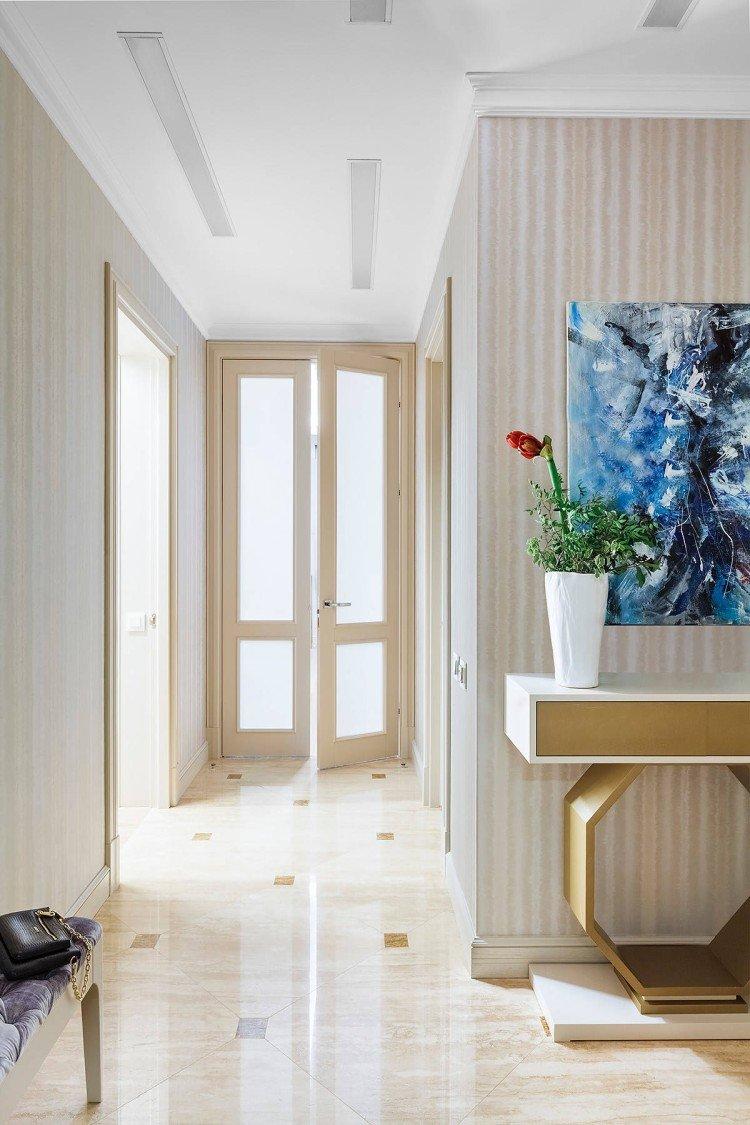
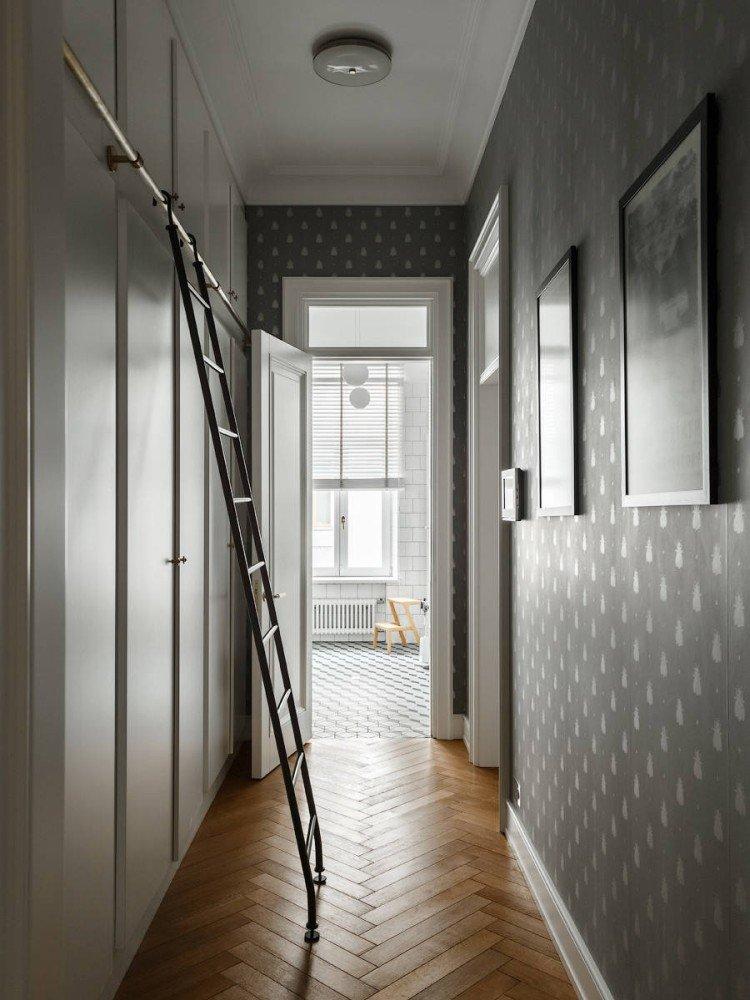
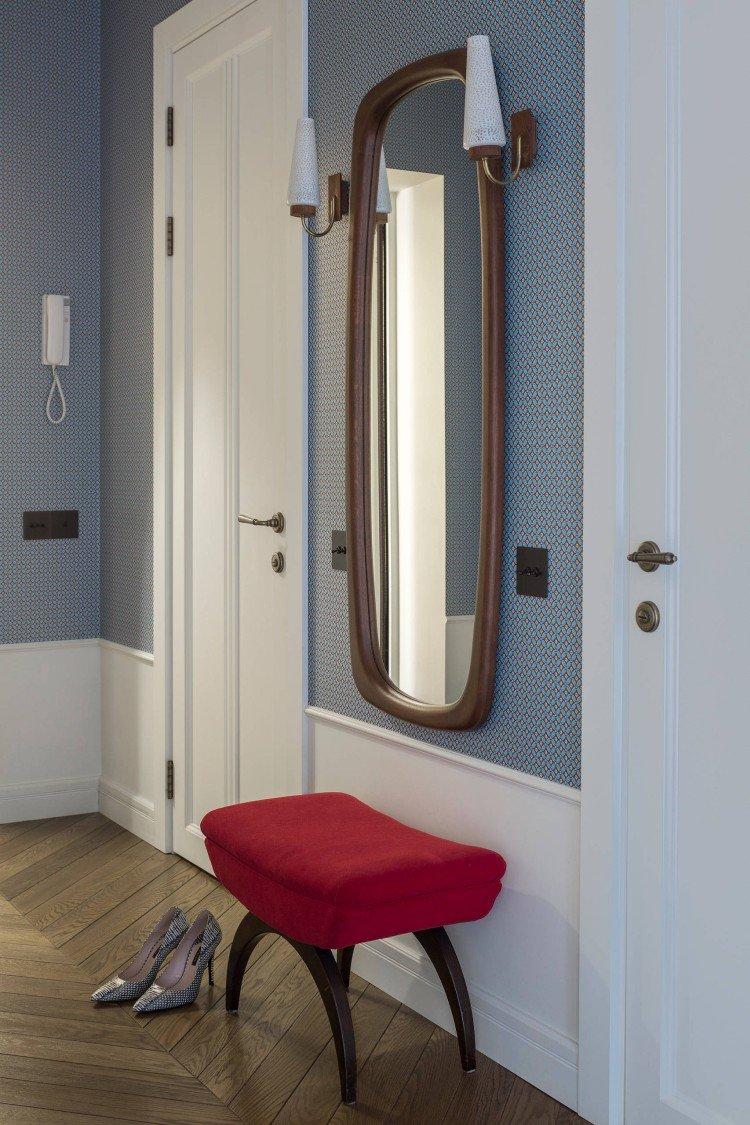
Design of a narrow corridor in an apartment
When decorating a narrow corridor, your task is to visually expand the room, and expressive straight lines will help in this. Choose tiles for wood planks and lay them perpendicular to narrow walls. Install spotlights and any other pronounced contours in the same way. Make the opposite wall from the door accent, and expose the furniture so that the high and low elements alternate chaotically, and there is no illusion of an elongated straight line.
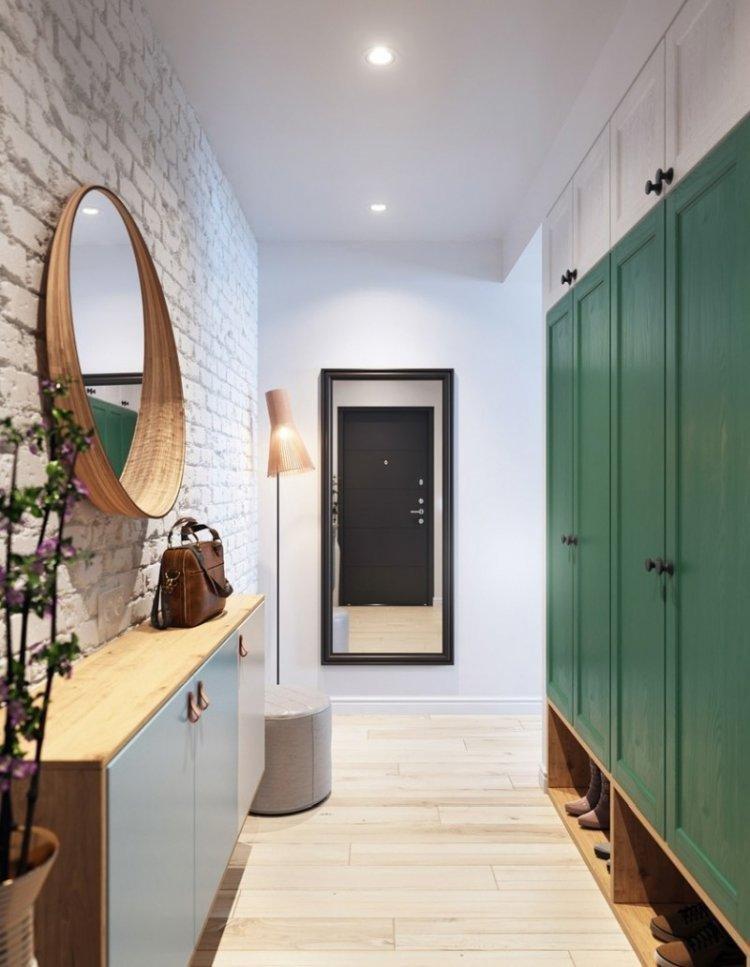
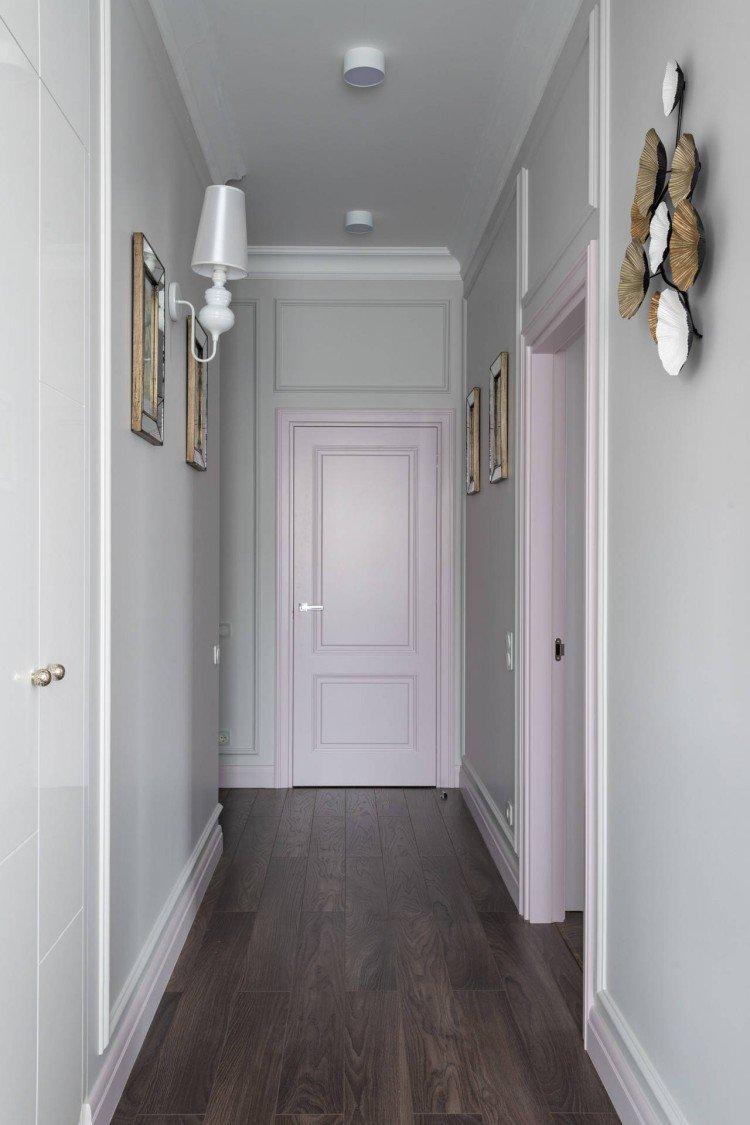
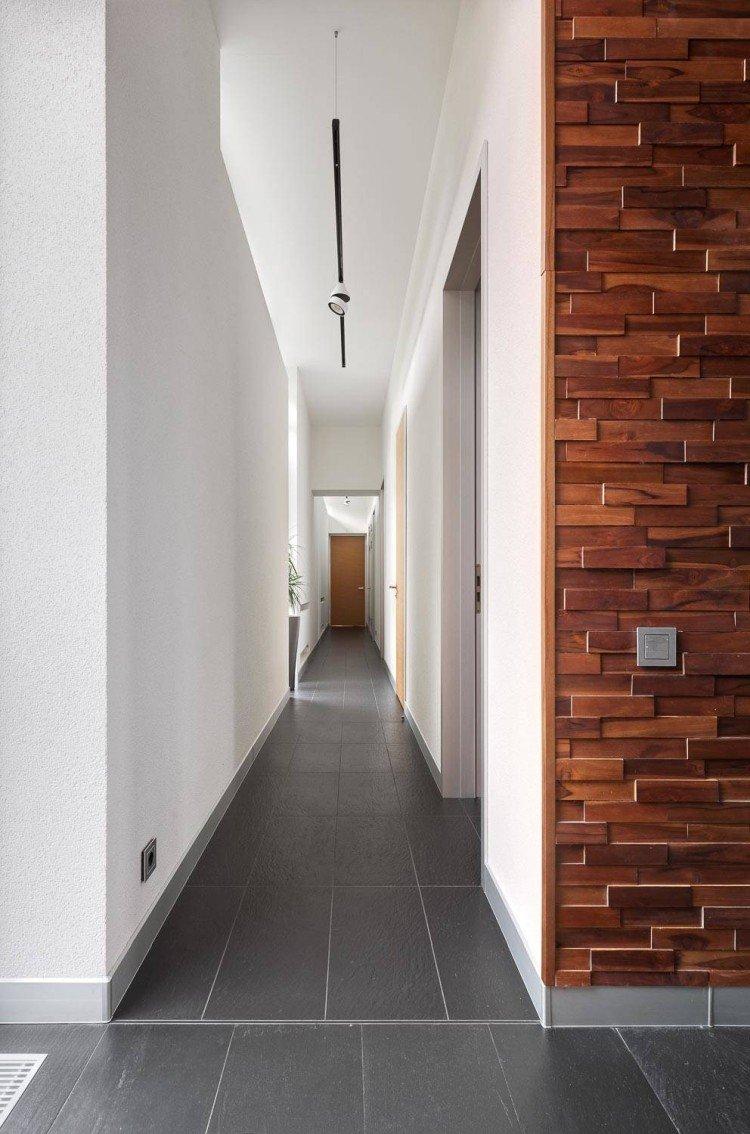
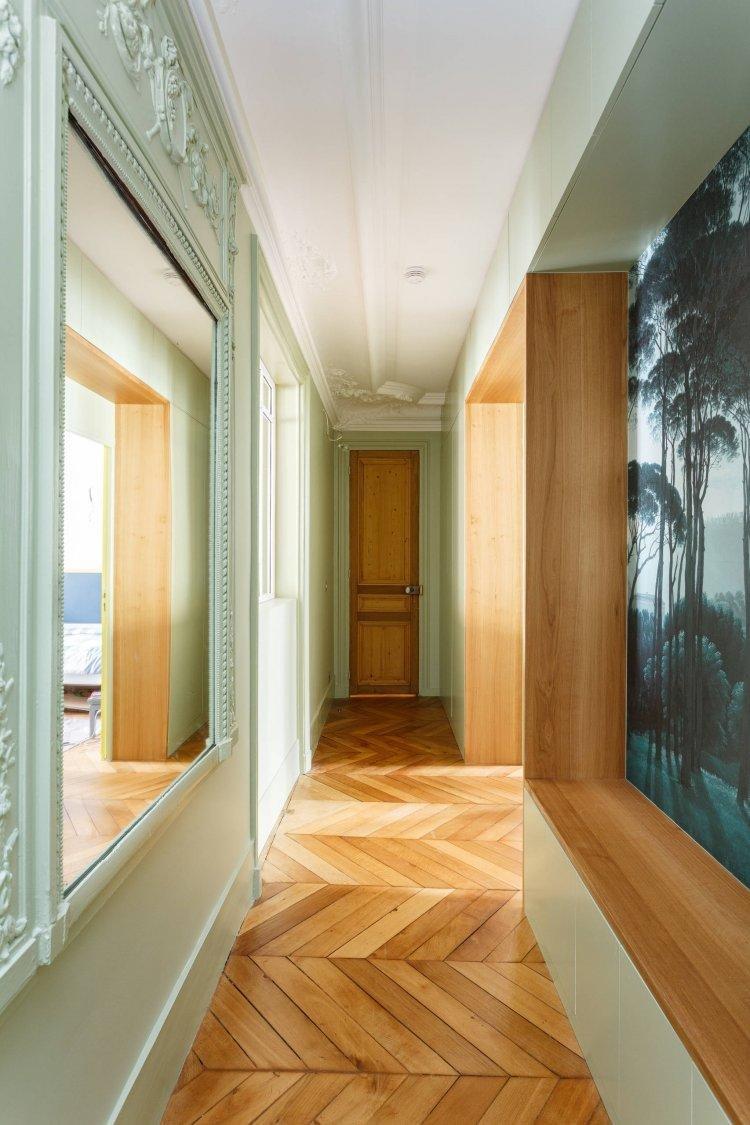
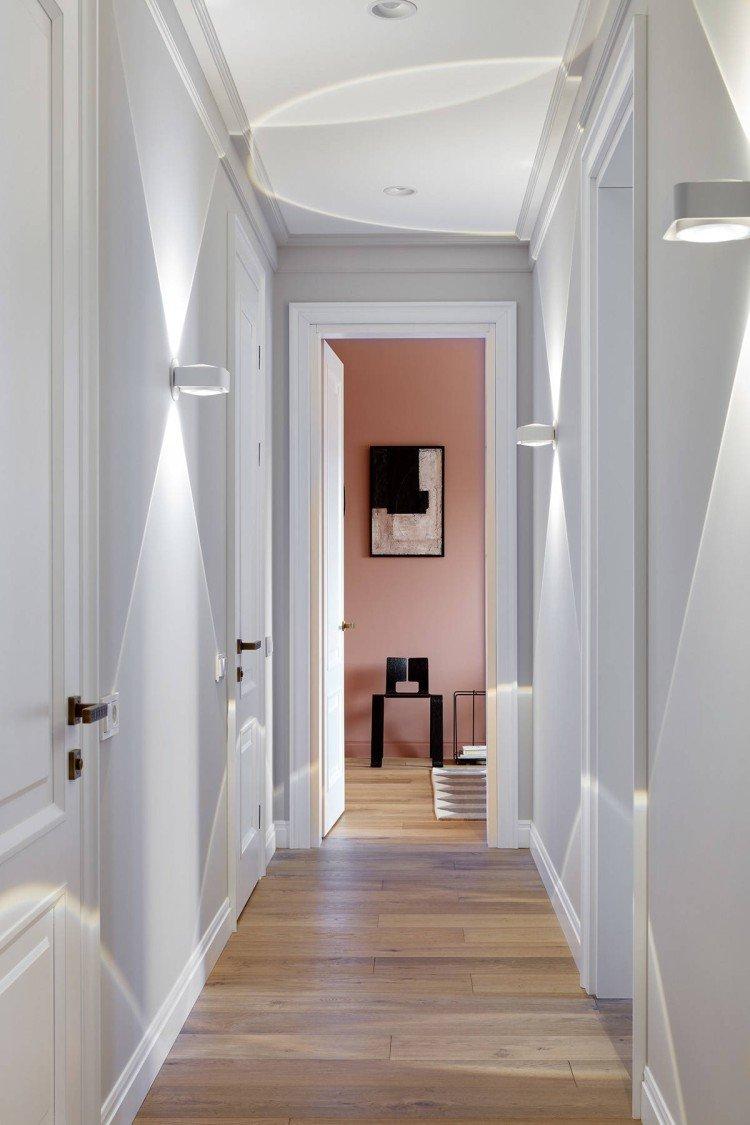
Bright corridor in the apartment
Light shades are the best friend in corridor finishing because they compensate for the lack of natural light. It is not necessary to limit yourself to white and milky, because you have all the pastel colors at your disposal. For example, warm and cozy vanilla or delicate and airy pale cornflower blue.
